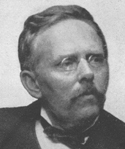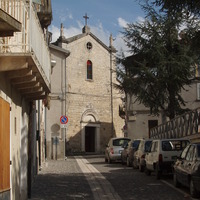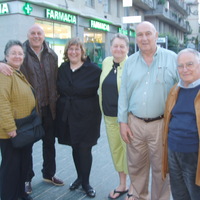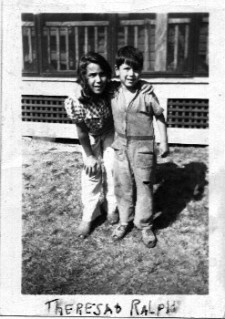Anna Quintilia D'Orazio Cervone
 Wednesday, December 31, 2008 at 3:35PM
Wednesday, December 31, 2008 at 3:35PM 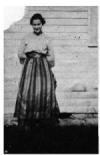 Anna Quintilia D'Orazio CervoneMy great grandmother Anna Quintilia D'Orazio Cervone (aka Condelia) was born in San Salvo on April 7, 1866 to Graziano Stanisloa Luigi D'Orazio and Maria Loreto.
Anna Quintilia D'Orazio CervoneMy great grandmother Anna Quintilia D'Orazio Cervone (aka Condelia) was born in San Salvo on April 7, 1866 to Graziano Stanisloa Luigi D'Orazio and Maria Loreto.
Condelia had three half siblings from her father's first marriage to Audrie Sorge. Graziano married Audrie in San Salvo on the 26th of January 1854, but was widowed eight years later (April 1862) when Audrie died at the age of 29. Audrie and Graziano had 3 children during their marriage, two of whom died in infancy:
- Anna D'Orazio, b. 1854, San Salvo, Chieti, Abruzzo, Italy; d. 03 Dec 1854, San Salvo, Chieti, Abruzzo, Italy
- Giacoma D'Orazio, b. Abt. 1857, San Salvo, Chieti, Abruzzo, Italy; d. 1886, San Salvo, Chieti, Abruzzo, Italy
- Michele D'Orazio, b. 29 Sep 1860, San Salvo, Chieti, Abruzzo, Italy; d. 01 Oct 1860, San Salvo, Chieti, Abruzzo, Italy
Graziano married Maria approximately one year later in San Salvo on March 26, 1863. The couple had seven children together, (at least) three of whom survived to adulthood:
- Gaetano D'Orazio, b. 20 May 1864, San Salvo, Chieti, Abruzzo, Italy; d. unknown
- Anna Quintilia D'Orazio, b. 07 Apr 1866, San Salvo, Chieti, Abruzzo, Italy; m. Vincenzo Cervone, 14 Sep 1884, San Salvo, Chieti, Abruzzo, Italy; d. 02 Apr 1946, Greenport, Suffolk, New York, USA
- Antonia D'Orazio, b. 01 Jan 1868, San Salvo, Chieti, Abruzzo, Italy; d. 25 Jul 1868, San Salvo, Chieti, Abruzzo, Italy
- Michele D'Orazio, b. 09 Feb 1870, San Salvo, Chieti, Abruzzo, Italy; d. 09 Jul 1871, San Salvo, Chieti, Abruzzo, Italy
- Anna Saveria D'Orazio, b. 21 Sep 1871, San Salvo, Chieti, Abruzzo, Italy; m. Luigi di Nizio 23 Nov 1889, San Salvo, Chieti, Abruzzo, Italy; d. unknown
- Michele D'Orazio, b. 07 Mar 1873, San Salvo, Chieti, Abruzzo, Italy; d. 02 Nov 1873, San Salvo, Chieti, Abruzzo, Italy
- Berinice D'Orazio, b. 26 Mar 1875, San Salvo, Chieti, Abruzzo, Italy; m. Giacinto Bracciale, 25 Aug 1895, San Salvo, Chieti, Abruzzo, Italy; d. unknown
______________________________________________________________________________________
 Birth Certificate for Anna Quintilia D'Orazio
Birth Certificate for Anna Quintilia D'Orazio
To the left is a photograph of Condelia's birth certificate from San Salvo. (Click on the image to enlarge) It is in Italian (of course!), but please see below for a partial translation:
L'anno mille ottocento sessantasei nel giorno nove del mese di Aprile =The year 1866, the nineth day of April
Giuseppe Ciavatta Sindaco ed uffiziale della Stata Civile del questa Comune di San Salvo, Circondario di Vasto, Provincia di Chieti e comparso = Giuseppe Ciavatta, Mayor, an official of the civil registration of the Comune of San Salvo, District of Vasto, Provence of Chieti presents
Graziano d'Orazio, di Giacoma, di anni trentasei, di professione calzolaio, domicilaiato in San Salvo strada del Vasto, il quale ci ha presentato una bambina = Graziano d'Orazio, son of Giacoma, age 36, shoemaker by profession, living in San Salvo on Vasto Street, who presented to us a female baby
ed ha dichiarato che lo stesso e nato nel giorno sette del volgente Aprile alle ore cinque = and he declared that same was born on the seventh day of April of the current year at the hour of five
moglie Maria Loreto di Raffaele, di professione filatrice = (of) mother Maria Loreto, daughter of Raffaele, (who is a ) spinner by profession
dichiarato di dare il nome di Anna Quintilia = (The same) declared to give (his daughter) the name of Anna Quintilia
The presentation of the child was made in the presence of two witnesses:
Michele Viedi (?) fu Nicola, di anni quarantasei, di professione contadino = Michele Viedi, son of the deceased Nicola, age 46, peasant by profession
e Giuseppe Torino fu Nicola, di anni ventiquattro, di professione contadino, domiciliati in questa comune = and Giuseppe Torino, son of the deceased Nicola, age 24, peasant by profession, (both of whom) live in this town
_____________________________________________________________________________________
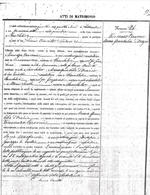 Marriage Certificate for Vincenzo Cervone and Anna Quintilia D'Orazio Condelia married Vincenzo in San Salvo on September 14, 1884. To the right is a copy of their marriage certificate. (Click on the imagine to enlarge). Below is a partial translation of the document:
Marriage Certificate for Vincenzo Cervone and Anna Quintilia D'Orazio Condelia married Vincenzo in San Salvo on September 14, 1884. To the right is a copy of their marriage certificate. (Click on the imagine to enlarge). Below is a partial translation of the document:
ATTI DI MATRIMONIO = Act of Marriage, or Marriage Document
L'anno milleottocentottanta quattro, addi quattordici di Settembre = The year 1884, on the day fourteen, of the month September
nella Casa Comunale di San Salvo, aperta al pubblico = in the city hall of San Salvo, open to the public
Avanti di me Livino (?) Cavatta, Sindaco, Uffiziale dello Stato Civile, vestito in froma ufficiale, son personalmente comparsi= Before me Livino Cavatta, Mayor, an official of the civil registration, officially and personally appeared:
1. Vincenzo Cervone, di anni venticinque, contadino, nato in Serramonacesca, residente in San Salvo, figlio del fu Gaetano, residente in Serramonacesca e della fu Teresa Michitti, residente in San Salvo= Vincenzo Cervone, age 25, peasant by profession, born in Serramonacesca, living in San Salvo, son of the deceased Gaetano, who resided in Serramonacesca and the deceased Teresa Michitti, who resided in San Salvo
2. Anna Quintilia d'Orazio, di anni diciotto, contadina, nata in San Salvo, residente in San Salvo, figlia del fu Graziano, residente in San Salvo e di Maria Loreto, residente in San Salvo= Anna Quintilia d'Orazio, age 18, born in San Salvo, living in San Salvo, daughter of the deceased Graziano, who resided in San Salvo and Maria Loreto, who resides in San Salvo
i quali me hanno rechiesto di unirli in matrimonio = who made a request of me to unite them in marriage
___________________________________________________________________________________
Condelia and Vincenzo had six children in San Salvo (three of whom survived to adulthood) and two children in Greenport:
- Teresa Cervone, b. 13 Jan 1885, San Salvo, Chieti, Abruzzo, Italy; d. 21 May 1885, San Salvo, Chieti, Abruzzo, Italy
- Gaetano Cervone, b. 08 Feb 1886, San Salvo, Chieti, Abruzzo, Italy; d. 02 Jan 1887, San Salvo, Chieti, Abruzzo, Italy
- Antonia Cervone, b. 19 Nov 1887, San Salvo, Chieti, Abruzzo, Italy; m. Antonio Nanni, San Salvo, Chieti, Abruzzo, Italy; d. 13 Jul 1982, Sag Harbor, Suffolk, New York, USA
- Gaetano Cervone (aka Harry Loreto), b. 02 Feb 1890, San Salvo, Chieti, Abruzzo, Italy; m. Ethel B, Sep 1926, place unknown; d. 01 May 1959, Sag Harbor, Suffolk, New York, USA
- Lucia Cervone, b. 17 Jan 1892, San Salvo, Chieti, Abruzzo, Italy; d. 13 Sep 1892, San Salvo, Chieti, Abruzzo, Italy
- Raphael Cervone, b. 11 Aug 1894, San Salvo, Chieti, Abruzzo, Italy; m. Felixa Binkowsky, 15 Feb 1920, Shelter Island, Suffolk, New York, USA; d. 29 Jun 1965, Suffolk, New York, USA
- Casmiro R Cervone, b. 04 Mar 1907, Greenport, Suffolk, New York, USA; m. Rose J Cervone 14 Nov 1926, Greenport, Suffolk, New York, USA; d. 14 Mar 1963, Greenport, Suffolk, New York, USA
- Frances Cervone, b. 04 Jul 1908; Greenport, Suffolk, New York, USA; m. Louis R Reiter 1 Nov 1924, Greenport, Suffolk, New York, USA; m. Otto Sinramm unknown date, Suffolk, New York, USA; d. 13 Oct 1990, Cedarhurst, Suffolk, New York, USA
__________________________________________________________________________________
Over a 15 year period, Condelia, Vincenzo, Antonia, Gaetano, and Raphael all immigrated to New York from San Salvo. Vincenzo was the first to immigrate, probably around 1894. (This appears to be the date of immigration listed on the 1910 census, which I found online. Unfortunately, the online copy is very poor quality, so I will need to go to the NY District Branch of the National Archives to examine their copy on microfilm.) Even without official documentation, it is reasonable to assume that Vincenzo immigrated around this time, as the couple had their last child in Italy in 1894. Condelia had my grandfather, Casimero, approximately 15 months after arriving in the US.
Gaetano immigrated to New York from Naples on June 10, 1903, aboard the SS Nord America. He was accompanied by his paternal aunt, Cesidia Cervone Loreto. Gaetano and Cesidia arrived at Ellis Island on June 24, 1903 and were detained until June 25th at 10 AM, when Cesidia's husband (Casimero Loreto) came to collect them. (About 20 percent of immigrants were detained at Ellis Island, mostly due to health and legal reasons. In addition, unescorted women and children were detained until their safety was assured through the arrival of a telegram, letter, or a pre-paid ticket from a waiting relative. Most were not kept more than five days, and were housed in a dormitory on site. Woman were only released to a male relative.) On the manifest, it indicated that Gaetano was going to his father, Vincenzo Cervone -- 78 Mulberry Street. Casimero was living in Greenport at that point, but it is unclear if Vincenzo was still living in Little Italy or if he too had moved to Eastern Long Island (in other words, they had an old address).
Condelia and Raphael left Naples on December 31, 1906 aboard the SS Brasile -- 103 years ago today. On the ship's manifest, it indicated that their passages where paid for by Vincenzo. Condelia and Raphael arrived at the Port of New York (Ellis Island) on January 14, 1906. They were detained until 4:30 PM on January 15, 1906, when Gaetano came to get them. At this point, both Gaetano and Vincenzo were living in Greenport.
Interestingly, Condelia indicated at departure that she was in possession of $10. This sum was subsequently crossed out when she arrived at Ellis Island, and simply replaced with a zero. Basically, Condelia arrived in New York with the clothes on her back and a little boy in toe.
Antonia, her husband (Antonio Nanni) and her three year old son (Vitale Nanni) were the last family members to immigrate to New York. They left Naples on February 12, 1909 aboard the SS Prinzess Irene. They indicated that their passage was paid for by Antonia's uncle, Casimero Loreto, and that they were in possession of $20. The family arrived in Ellis Island on February 27, 1909 and interestingly, they were also detained. The reason for detension was listed as "too late". They were "released to destination" the following morning at 10 AM. Their final destination was "Uncle Casimero Loreto, Greenport NY".
As I noted above, Condelia had my grandfather Casimero on March 4, 1907 in Greenport, approximately 15 months after she arrived in the US. Frances was born exactly sixteen months later on July 4, 1907. According to the census, Vincenzo, Condelia, Raphael, Casimero and Fanny were living on Fifth Street in Greenport in 1910. Vincenzo was not working at that point, most likely due to failing health (see below). Condelia's occupation was listed as a "laundress", who worked in the home. Rapheal was working as a laborer at the (Sage's) Brick Yard.
On November 5, 1911, Condelia became a widow when Vincenzo died at the age of fifty from Emphysema. She was fourty five years old.
I was told by more than one relative that Vincenzo was buried in a "pauper's cemetary". I took this at face value initially. But after I received a copy of his death certificate from New York State, I realized that this was actually family lore. Vincenzo was (in fact) buried in St. Agnes Cemetery in Greenport on November 6, 1911. The undertaker was S B Horton. I am not sure how she did it, but Condelia scraped together enough money to give her husband a proper burial.
According to the census, Condelia was living in the "rear" of 516 Fifth Street with Raphael (25 years), Casimero (12 years) and Philnino (11 years) in 1920. Her occupation was still listed as a "laundress" in the home; Raphael was working as an "oyster opener" in a shop. Harry Loreto (aka Gaetano Cervone) was living a few doors down at 449 Fifth Street with Nan Johnson, a single Black woman who was listed as a "servant" (more on this at another time). Harry's occupation was listed as a "laborer on oyster boat".
In 1930, Condelia was living at 451 Sixth Street. Her rented home was between Wiggins Street and Flint Street, just before the railroad tracks heading south. By than, she was technically retired; Raphael was working as a "oyster opener" at the Oyster House. On the other side of the tracks (no pun intended), Angelo Corazzo, Louisa, Angelo B were living at 414 Sixth Street. Casimero Cervone, Rose and Cecila were also living at this address. Tony Nanni and Antionet were living at 428 Sixth Street.
In all, Condelia lived in Greenport for 40 years. During this time, she married off four children and lived to see the birth of 8 healthy Italian American Grandchildren (Cecilia Cervone 1927, Theresa Cervone 1930, Robert Loreto 1931, Vincent Cervone 1934, Ralph Cervone 1936, David Cervone 1942, Otto Sinramm 1942 and his older sister; Vitale Nanni was born in San Salvo in 1906). She died on April 2, 1946, 5 days before her 80th birthday.
I have not gotten around to ordering Condelia's death certificate from New York State (Cervone, Cornelia A; Greenport; 84 y; Certificate # 25716), so I am not clear what her official cause of death was. According to my Aunt Ceil, she died in her home of a stroke. She was also laid out at home "in a room full of gardenias". She is buried in St. Agnes Cemetery. It is extremely difficult to find her plot in the cemetery, as she does not have a proper headstone. She has a marker, which is flush to the ground, that says "Cornelia Cervone 1861-1946".
____________________________________________________________________________________
 Michelle Cervone
Michelle Cervone
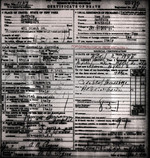 Certificate of Death for "Cornelia" CervoneTo the right is a scanned image of Condelia's Certificate of Death that I recieveded from the New York State Department of Health. (Click on the image to enlarge.)
Certificate of Death for "Cornelia" CervoneTo the right is a scanned image of Condelia's Certificate of Death that I recieveded from the New York State Department of Health. (Click on the image to enlarge.)
The information on the certificate was provided by Fanny Sinramm, Condelia's youngest child. It appears that Fanny did her best to "fill in the blanks", but I now know that some of the information is incomplete and some of it is incorrect.
At the time of her death, Condelia was still living at 451 Sixth Street, which is the address listed on the 1930 US Census. Fanny noted that her mother had lived in Greenport for "60 years", which is incorrect. As I previously mentioned, Condelia immigrated to the United States in 1906 and lived in Greenport for 40 years.
Fanny correctly stated the month and day her mother was born (April 7), but incorrectly stated her year of birth as 1861. She knew her grandfather's name was Graziano and she did a good job approximating her grandmother's maiden name (i.e. "Mary Loretta" is very close to Maria Loretto).
The place of buriel was Saint Agnes Cemetary in Greenport, NY. The date of buriel was April 4, 1946. The Undertaker was S W Horton.
William Kaplan was the Attending Physician who signed her Death Certificate. Condelia was under Dr. Kaplan's care for 10 years. He documented that Condelia passed away at 7:30 (AM or PM?) on April 2, 1946. He listed the cause of death as "Cerebral Hemorrhage due to Arteriosclerosis", which is consistent with what my Aunt Ceil told me. MAC
